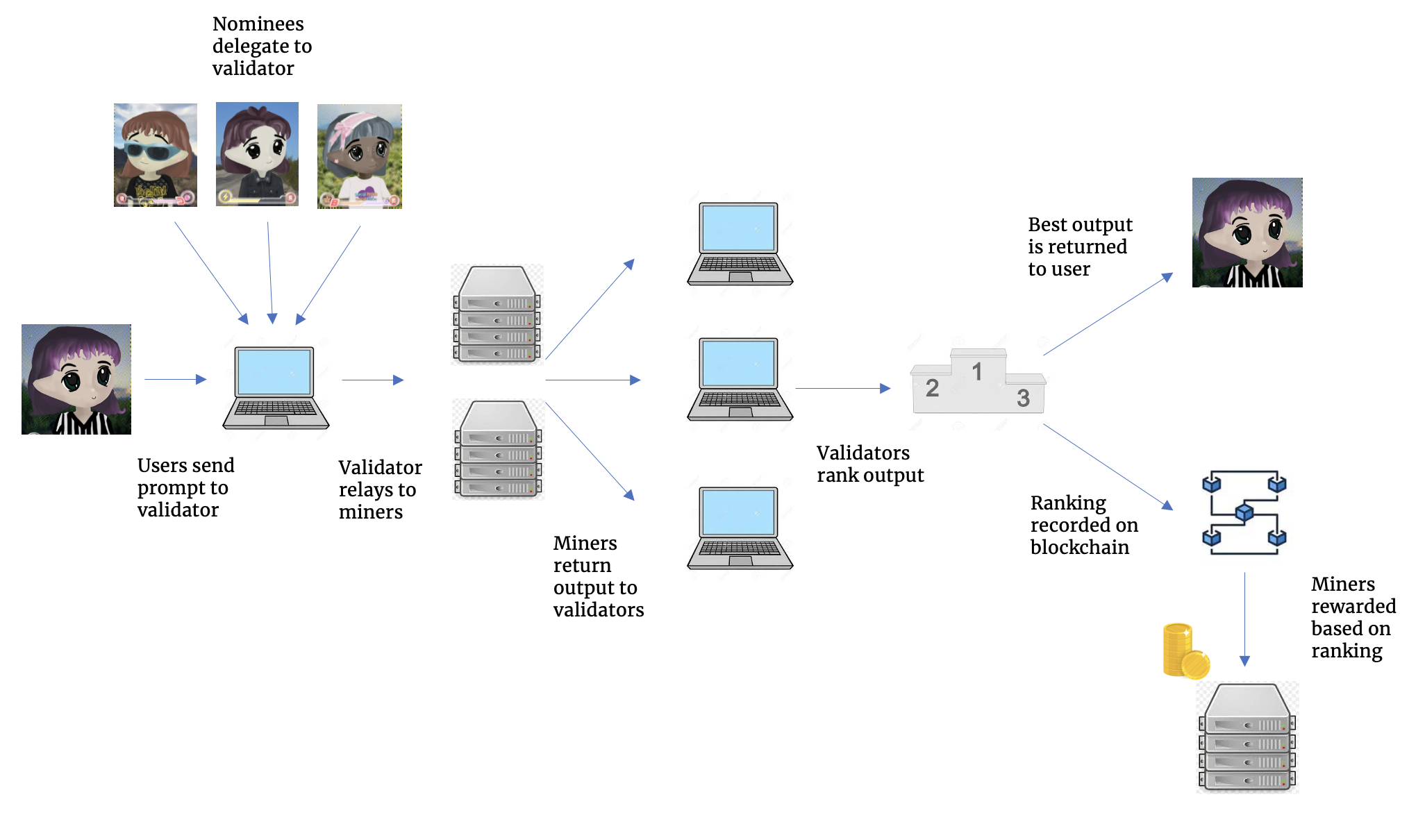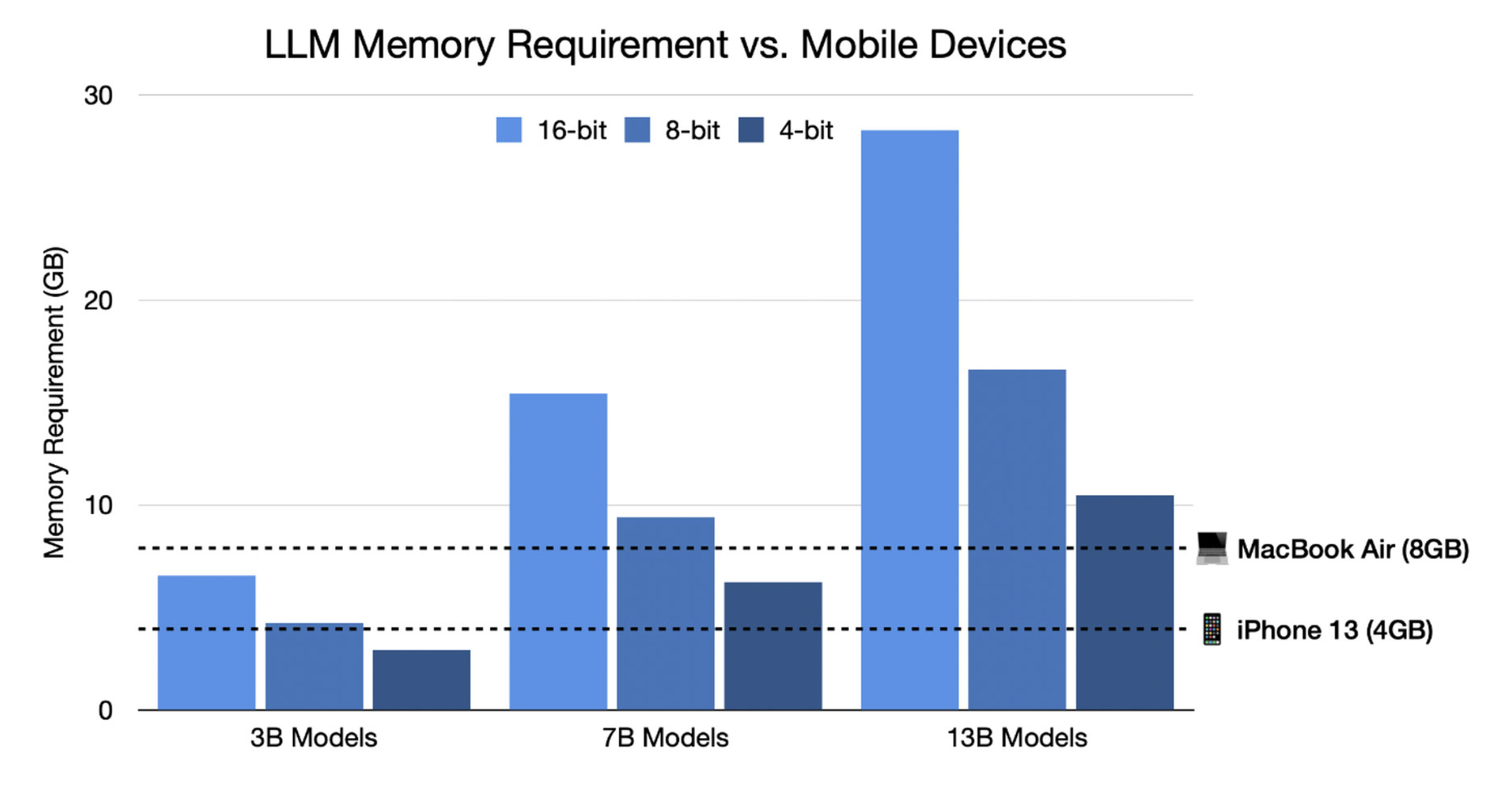Decentralized Intelligence: Bittensor's Vision for Universal AI
As you wake up in the morning, a gentle voice floats in — your AI assistant, “Good morning. I trust you rested well. The results from your doctor’s visit are in; would you like to review them? Also, you have an 11 am meeting with the board members to discuss quarterly projections. You’ll need to prepare talking points regarding the upcoming layoffs. Finally, this afternoon offers a window for you to revisit notes I took from last night’s business dinner. Oh, and Elizabeth’s soccer practice wraps up at 6 pm; she’ll be waiting for you.”
Envision a future where we depend on OpenAI or Anthropic for their AI solutions. In this future, blackbox algorithms shape our daily lives, possess deep insights into our personal details, and centralize authority within mega-corporations. If you step out of line, your service is shut off. Speak about a forbidden topic, and you’re reported to the authorities.
But there’s a more optimistic alternative. This is a world where top-tier AI is rooted in open-source platforms, powered by a universally-owned network. Here, there’s no threat of service denial, no corporate entity lurking to seize your data. Creativity and development flourish, free from biases and censorship.
The internet democratized information. AI democratizes intelligence. We wouldn’t want corporations to unilaterally control information, nor should we want corporations to control intelligence. Luckily, we can build open digital networks that outcompete their centralized counterparts using incentivized and crowdsourced contributions.
Realizing AI’s Full Potential
OpenAI, Meta, Anthropic, et al have been instrumental in advancing AI but there are limitations of closed-source development including data and model diversity, unchecked biases, scaling compute, and censorship guardrails.
-
Community Inclusivity: A global developer community is crucial. Just as open-source platforms have thrived on contributions from enthusiasts worldwide, AI’s growth will similarly benefit from a diverse range of minds working together.
-
Boundless Compute Capabilities: Drawing a parallel to Bitcoin, which stands as the world’s largest computing network, AI requires computational power beyond what individual corporations can offer.
-
Diverse Data and Collaborative Learning: Like a child broadens their understanding through social interactions, AI thrives in a dynamic environment. Exposure to varied data, insights from innovative researchers, and interactions with different models will facilitate the creation of superior AI systems.
-
Democratic Ownership and Decision-making: A singular entity should not dictate AI’s trajectory. Open governance and ownership will ensure that AI’s development benefits from a wealth of perspectives, ensuring it’s more globally attuned and ethically grounded.
-
Strategic Capital Allocation: Just as any global initiative needs funding for research, development, and deployment, AI’s success will be heavily influenced by how capital is coordinated and how stakeholders are rewarded for their contributions.
Bittensor as the Answer
Bittensor is a global marketplace for open-source artificial intelligence. The network enables AI researchers to submit their models to be used by end users. By facilitating a free market, the network becomes a gravitational force that pulls in the best AI models. Once mature, Bittensor will offer lower prices, there will be no platform risk, and the AI output, whether it be text, images, video, etc, will be the best available.
Bittensor makes open-source not just the right way to do things, but the profitable way. Following in Bitcoin’s footsteps, Bittensor is designed around the assumption that stakeholders are profit-motivated; the best models earn the most money. In the same way that Bitcoin mining transitioned to a highly competitive and professionalized industry, so too will competition to provide the most performant models. PhD researchers no longer need to pick between academia and private industry. They can take their research to the battlefield and compete in an open marketplace.
The incentives have worked. In total, Bittensor serves over 4,000 AI models with over 10 trillion model parameters. For reference, GPT-3 has 175 billion parameters.
Bittensor’s stakeholders include miners, validators, nominees, and consumers.
-
Miners are AI experts who share their models with the network. The best models get top ratings from validators and are used more frequently, resulting in more revenue. This system attracts top talent, much like top traders are drawn to Ethereum instead of traditional firms.
-
Validators assess the quality of AI models and manage user requests. They rank models based on their performance for specific tasks. The better and more consistent their evaluations, the more they earn. If they’re inconsistent, they risk penalties.
-
Nominees are individuals who own TAO tokens and support specific validators by delegating their tokens to them. They earn rewards for their participation. If a validator underperforms, nominees can shift their support to another.
-
Consumers are the end-users, ranging from app developers to chatbot users. They prioritize high-quality answers. Developers, specifically, will pick validators they believe best suit their requirements.

The product of this coordination among stakeholders is a network that continually surfaces the best models for a given use case. With anyone able to experiment, it’s hard for closed-source businesses to even compete. A leaked internal Google memo describes the open-source advantage.
“While our models still hold a slight edge in terms of quality, the gap is closing astonishingly quickly. Open-source models are faster, more customizable, more private, and pound-for-pound more capable. They are doing things with $100 and 13B params that we struggle with at $10M and 540B. And they are doing so in weeks, not months.”
ChatGPT was the fastest growing product ever and nearly every business is tapping into one of the big AI providers. Meanwhile, Bittensor is just now taking the training wheels off the network, allowing for permissionless experimentation through the creation of specialized subnetworks. With Meta open-sourcing their Llama2 LLM, how quickly will the performance gap close between Bittensor’s output and GPT4? If that gap does close, Bittensor will be the most used network in crypto by an order of magnitude.
Current Progress
Bittensor opened the ability for anyone to create a subnetwork that specializes in a certain application. An example is Subnet 4 which uses JEPA (joint embedding predicted architecture), an AI approach pioneered by Meta’s Yann LeCun, to handle a variety of inputs and output types such as video, images, and audio in a single model. This approach is more aligned with how humans interpret the world, using multiple inputs to make decisions.
For the technically inclined, I also suggest looking into the work that the OpenTensor Foundation has done with Cerebras to develop the world’s most performant 3 billion parameter model, BTLM. This work makes it possible to run highly accurate and performant models on mobile devices and is an example of making AI more accessible.

Source: Cerebras
Summary
One of crypto’s superpowers is the ability to create open and cohesive incentive networks around otherwise closed and disjointed digital commodities. Because AI promises to be such an intimate part of our daily lives, it’s especially important that the foundation is built on an open protocol. Bittensor is one of the most ambitious projects in tech right now, paving the way for a democratized and open-source AI future. Instead of intelligence being confined within corporate silos, it envisions a world where knowledge is accessible, transparent, and shared universally.
The information herein was prepared by Plaintext Capital Management LLC (“Plaintext”) and is believed by Plaintext to be reliable and has been obtained from public sources believed to be reliable. Plaintext makes no representation as to the accuracy or completeness of such information. Opinions, estimates and projections in this presentation constitute the current judgment of Plaintext and are subject to change without notice. This is not an offering or the solicitation of an offer to purchase an interest in any fund managed by Plaintext (collectively, the “Fund”). Any such offer or solicitation will only be made to qualified investors by means of a confidential private placement memorandum and only in those jurisdictions where permitted by law. The identified investment does not represent or approximate all of the investments purchased, sold, or recommended for the Fund. It should not be assumed that recommendations made in the future will be profitable or will equal the performance of the identified investment. An investment in the Fund is speculative and involves a high degree of risk. Opportunities for withdrawal, redemption, and transferability of interests are restricted, so investors may not have access to capital when it is needed. There is no secondary market for the interests, and none is expected to develop. The fees and expenses charged in connection with this investment may be higher than the fees and expenses of other investment alternatives and may offset profits. No assurance can be given that the investment objective will be achieved or that an investor will receive a return of all or part of his or her investment. Investment results may vary substantially over any given time period.